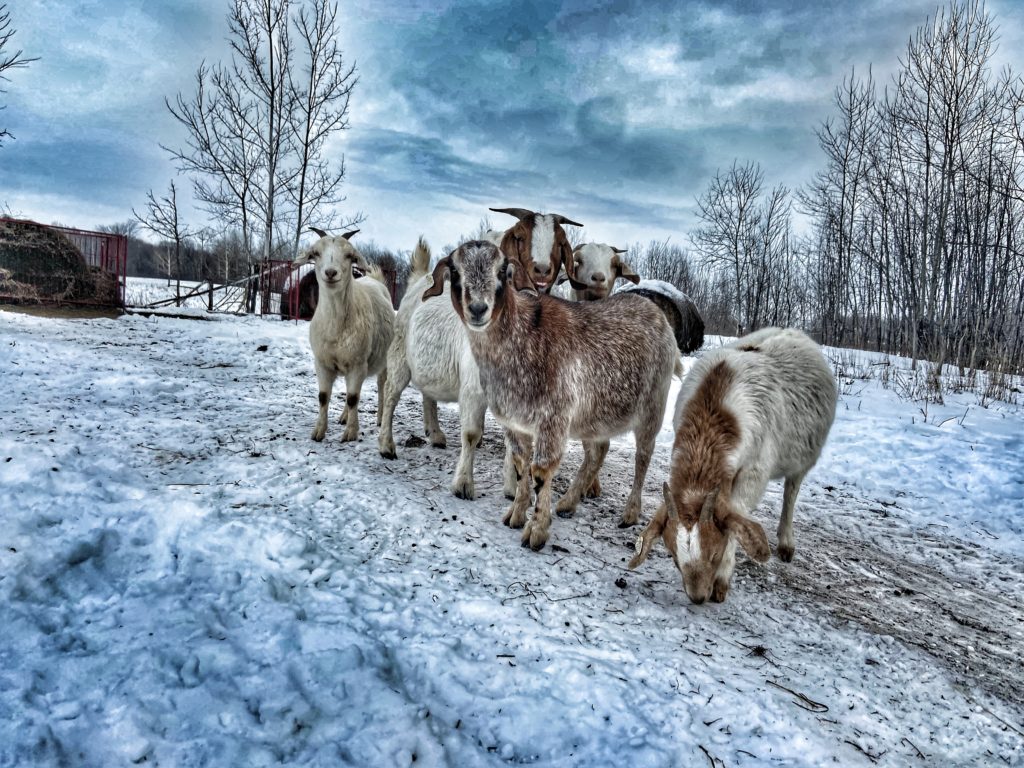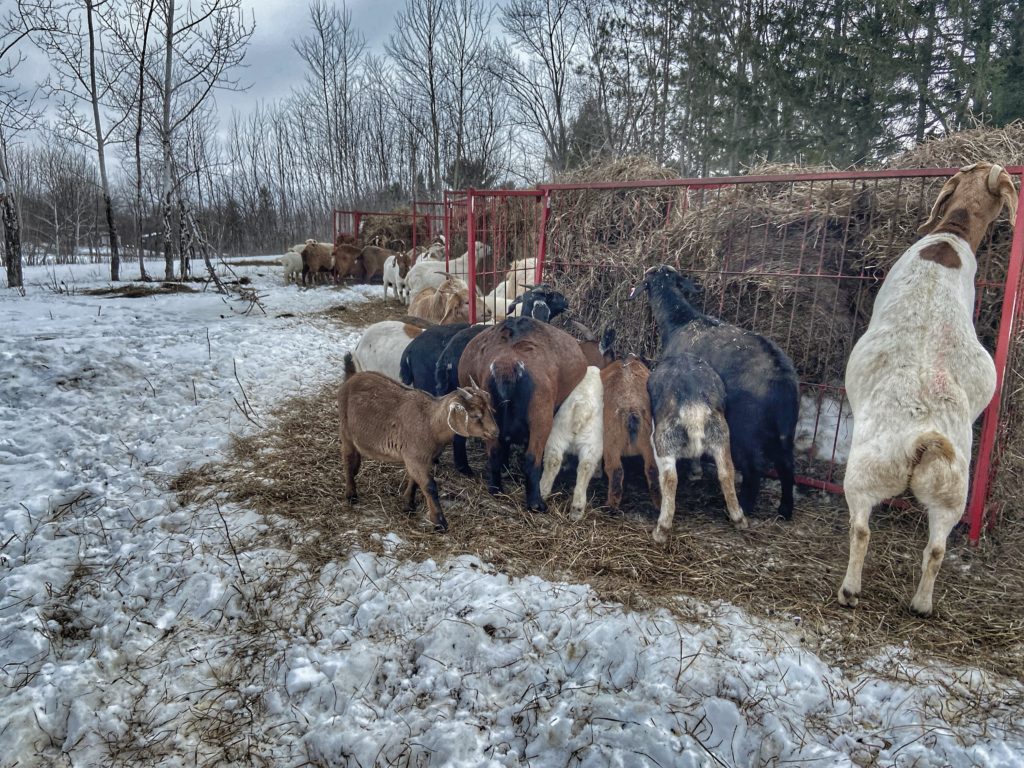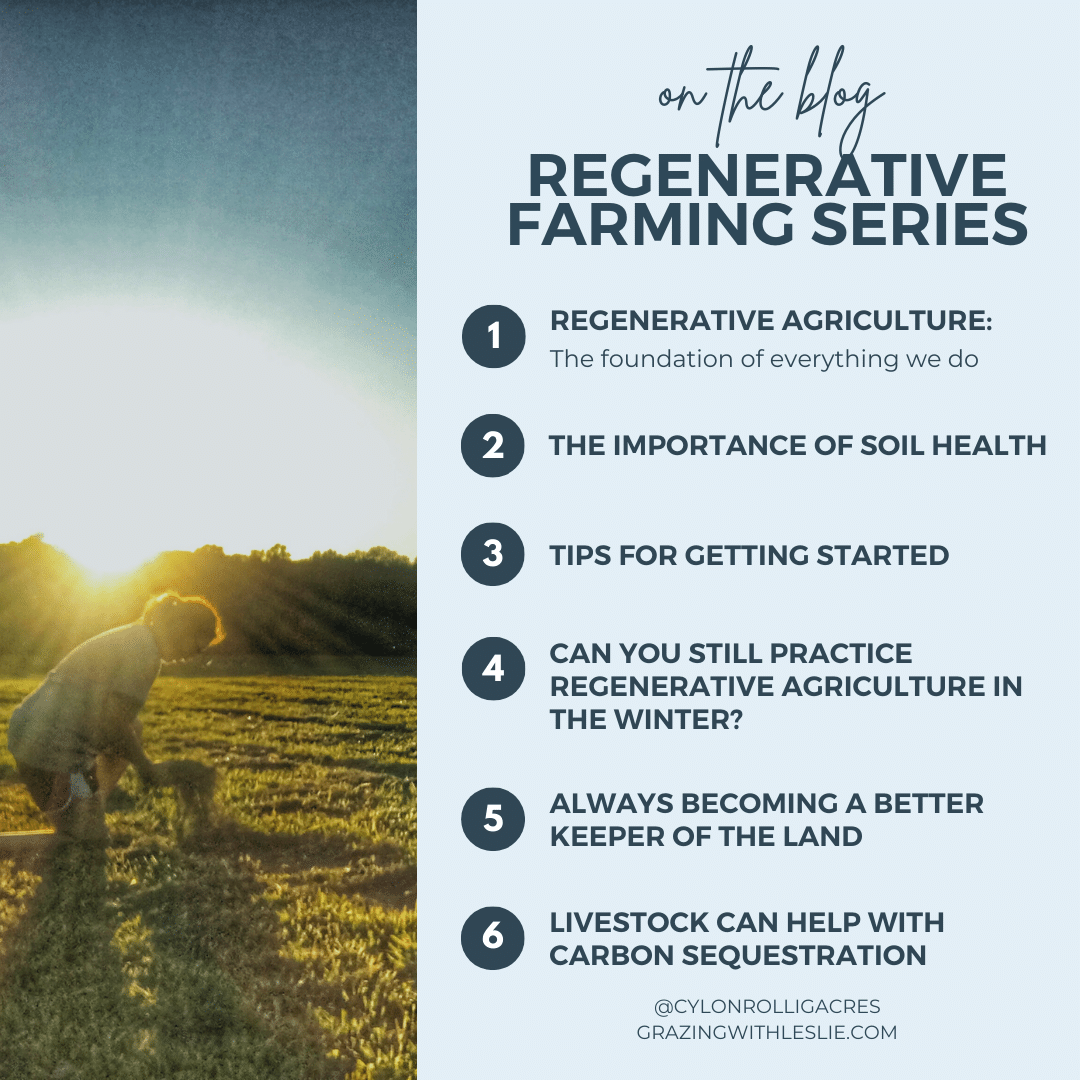
Yes! While it may seem like when everything goes dormant for the season, our work with the farm and the environment around us slows down. That is true, but there are ways we can prepare for winter and during the winter months that still keep the environment, in particular, soil health in mind.
Like all of farming, these practices will look different from farm to farm, based on the type of agriculture, topography, region, size, and so on. So many factors play a role in how we do this as farmers with the goal to protect and feed the soil. A few examples include using cover crops, leaving crop residue (corn stalk stubble), stockpiling forages for grazing, or keeping livestock in a “sacrifice area.”
These examples provide a protective layer for the soil, as well as add nutrients and organic matter to the soil by either breaking down plant matter or manure. The sacrifice area is used to protect the majority of the land from excessive hoof action, which is more of a concern with more moderate winter temps (aka mud-season), and with bigger livestock. Remember it’s always about maintaining and rebuilding the soil.

Bale grazing is one of the regenerative farming practices we use on our farm. Here’s how we do it:
- We place round bales of hay out in our winter pastures, typically 2-4 at a time depending on our herd sizes. Since we have small ruminants, we like to use bale feeders to avoid extra hay waste or a bale collapsing on an animal.
- While the goats and sheep have access to the barn for shelter, they’ll come outside to eat or “graze” on the bales.
- Once the bales are finished, we’ll strategically place a replacement bale in a different spot in the pasture, focusing on areas that have a greater need for both soil quality and plant diversity. The bale residue is left in that area.

How is this regenerative? How does it help the soil?
Soil health
As the goats and sheep finish a bale, they naturally leave behind their manure and urine which help directly fertilize the pastures. By feeding directly on the pasture, the soil can utilize the livestock urine instead of being lost in a barn or dry feeding lot with drainage (Jungnitsch et al., 2011).
The goat and sheep hoof action in that area also helps break down and incorporate their “fertilizer,” as well as some of the hay residue left behind in the existing pasture stand. Of course, my small ruminants have less hoof action than their beef counterparts, but their manure spreads out more easily due to its small size.
The bale residue also adds to the organic matter in the soil. Together both elements are improving the soil quality and health with added organic matter and soil nutrients to help the soil’s biological life continue to thrive underground and then feed our pastures in subsequent seasons.
The difference in these bale grazed areas is obvious come summer with increased plant growth, density and vibrant colors. I’ll show more visuals in a future blog post.
Pasture diversity
You might think that leaving behind the hay residue is problematic, but it’s not if it’s managed correctly. It’s quite beneficial. Besides adding to the organic matter, as discussed earlier, it also can be a source for enhancing pasture diversity. Any seed heads from the hay left behind are trampled into the ground by hooves, with the help of the added organic matter and fertilizer, they will help enhance the existing pasture with new plant life and species.
Of course, weedy hay isn’t desirable, no one wants more burdock. But, as discussed in earlier posts, plant diversity helps lead to a more resilient pasture (or crop) and diversity in the soil biology underground.
Less equipment use
By bale grazing, we are also cutting down on how much equipment use, ultimately fuel, we’re using on the farm. We use the tractor to place bales out on the pasture for feeding. We are then reducing the need for us to clean the barn during the winter and reducing how much bed back (straw and manure) in the barn we need to spread on our fields in the spring. It also reduces the need to bring in more nutrients to fertilize the soil.




Reference:
Jungnitsch. P., Schoenau, J.J., Lardner, H.A., and Jefferson, P.G. 2011. Winter feeding beef cattle on the western Canadian prairies: Impact on soil nitrogen and phosphorous cycling and forage growth. Agric. Ecosyst. Environ. 141: 143-152.


[…] Can you still practice regenerative agriculture in the winter? […]
[…] Can you still practice regenerative agriculture in the winter? […]